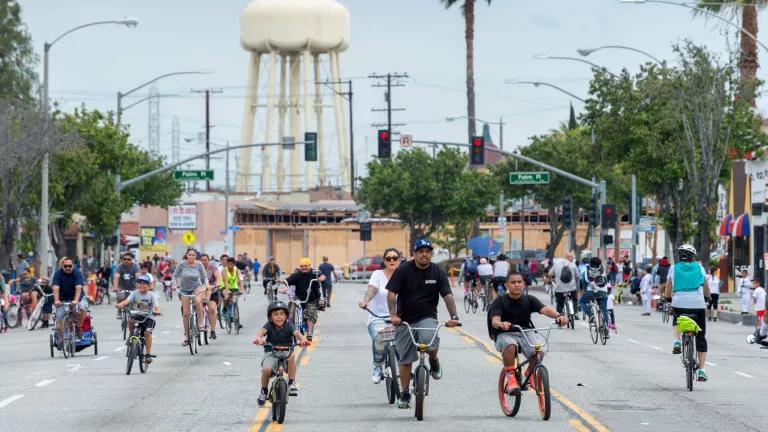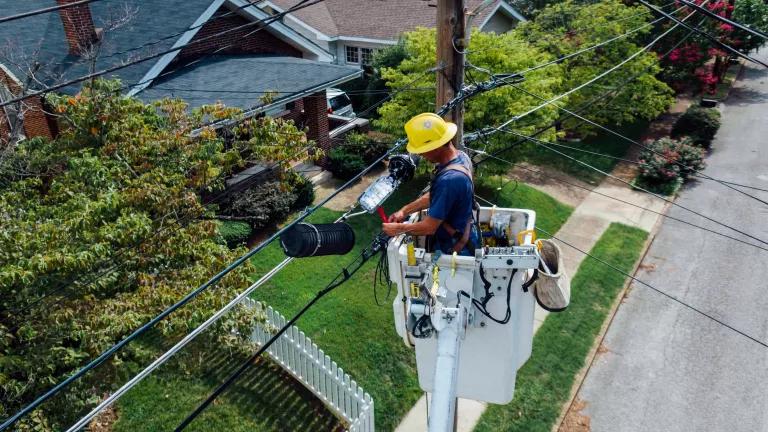Energy Efficiency and Electrification Take Center Stage in New Jersey
With historic commitments from Governor Phil Murphy, backed by robust programs, New Jersey is becoming a leader in clean, efficient buildings.

The New Jersey State House
It’s been a banner year for clean buildings policy in New Jersey. In February, Governor Phil Murphy set the precedent for the rest of 2023 and for future buildings policy in the state when he passed Executive Orders 316 and 317. Executive Order 316 sets a statewide goal of electrifying 400,000 homes and apartments, as well as 20,000 commercial spaces, by 2030. The order also established a target of making electrical repairs and upgrades to an additional 10 percent of residential units serving low- and moderate-income (LMI) households so that they are electrification-ready by 2030.
Executive Order 317 instructed the New Jersey Board of Public Utilities (NJBPU) to initiate a Future of the Natural Gas Utility Proceeding to develop emissions reduction plans for gas utilities that will comply with the state’s 2030 greenhouse gas emissions reduction target of 50 percent below 2006 levels. In this process, the NJBPU must consider a “clean heat” standard and other market mechanisms that will allow gas utilities to find the most cost-effective combination of electrification, energy efficiency, peak demand reduction, and other measures to meet their emissions reduction targets. The proceeding also addressed the affordability and reliability of the gas system for remaining customers as usage and customers decline, and the elimination of incentives for gas line extensions and other infrastructure that could become disused in the near future before it can be paid off. The proceeding took place from August 2–3 with a technical conference featuring NRDC’s Eric Miller as a panelist.
New Jersey energy efficiency program expansion and first-ever building electrification programs
To back up these commitments, the NJBPU vastly expanded funding for utility energy efficiency programs and created the first building electrification programs in New Jersey. Across all of the New Jersey utilities, there will be$1.6 billion in annual energy efficiency investment for each of the next three years. There are overall targets of a 2 percent reduction in retail sales for electric utilities and a 0.75 percent reduction in gas retail sales. The Comfort Partners Program for LMI customers will be expanded, and the Whole House pilot program will continue to provide coordinated weatherization, health, safety, and energy efficiency interventions. To increase funding, 50 percent of auction proceeds from the Regional Greenhouse Gas Initiative in New Jersey will be committed to whole-house LMI measures and high-level market transformation efforts.

Mitsubishi heat pump outdoor unit
The NJBPU also authorized the first utility building electrification programs in the state, with $350 million in funding over the next three years for electrification incentives toward meeting the governor’s goals set in Executive Order 316. This will be complemented by a further $100 million from the state-run new-construction energy efficiency program that is changing focus toward electrification from more traditional efficiency measures. The state LMI energy efficiency program now includes electrification as well, specifically focusing on participants in overburdened communities.
With combined funding from state and utility programs, New Jersey’s investment in clean buildings is now almost $2 billion annually, up from less than $500 million only a few years ago. With the Future of the Natural Gas Utility Proceeding and the development of a clean buildings road map underway, in addition to upcoming funding from Inflation Reduction Act programs, New Jersey is set to build on these impressive gains in coming years.


